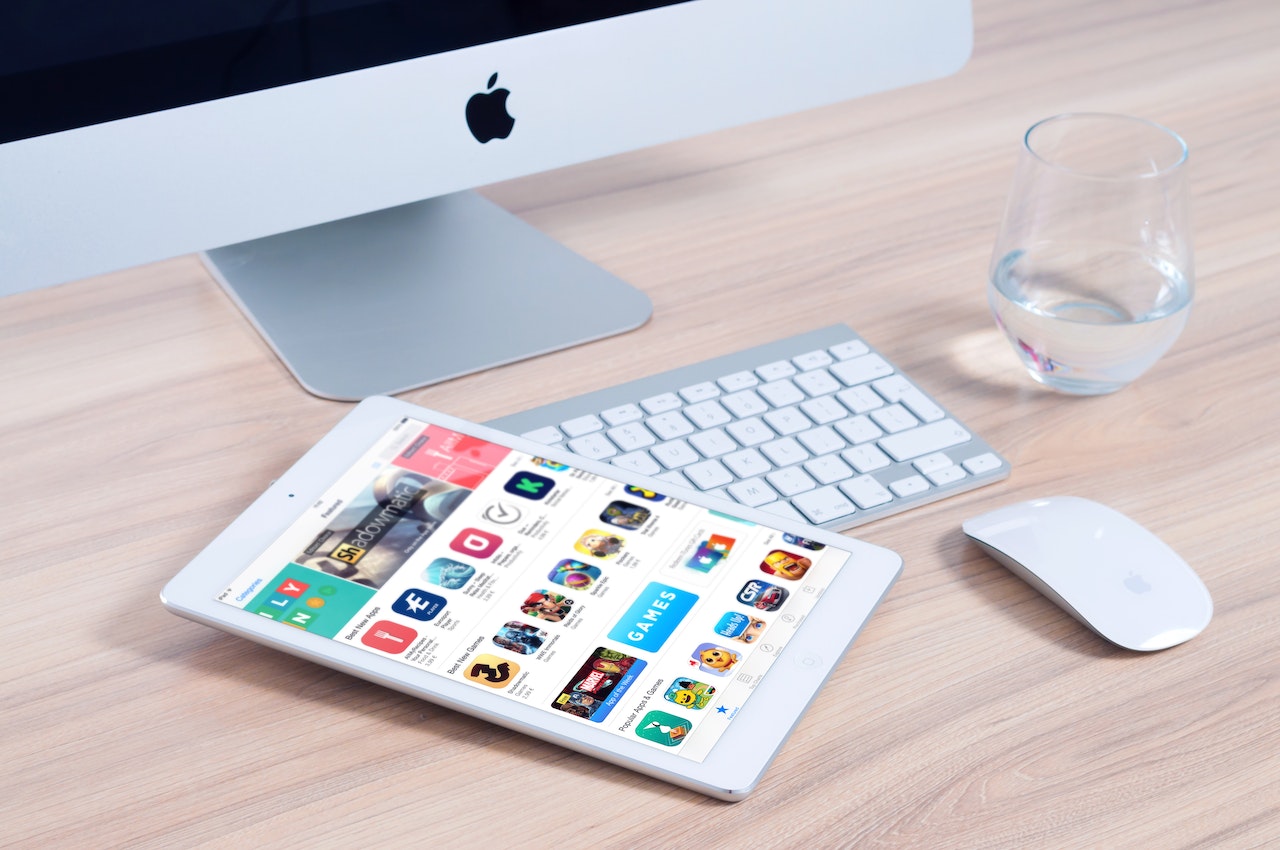Revolutionising Digital Design: The AI Impact

In recent years, the field of digital design has undergone a significant transformation with the introduction of artificial intelligence (AI) technologies. AI has revolutionised various industries, and digital design is no exception. This powerful technology has opened up new possibilities, streamlined processes, and enhanced creativity in the design world.
Enhancing Creativity and Innovation
Artificial intelligence has the potential to unleash unparalleled creativity and innovation in digital design. By leveraging its ability to analyse vast amounts of data, AI can provide designers with valuable insights and inspiration. AI algorithms can study patterns, trends, and user preferences, enabling designers to explore new ideas and push the boundaries of their creativity.
Moreover, AI-powered design tools can generate multiple design variations within seconds, significantly reducing the time spent on manual design iterations. Designers can experiment and refine their concepts more efficiently, leading to more innovative and compelling designs.
Additionally, AI algorithms can identify previously unseen correlations and connections within data, providing designers with fresh perspectives and novel design possibilities. This ability to uncover hidden patterns can spark new ideas and drive innovation in the digital design process.
Some ways in which AI enhances creativity and innovation in digital design include:
Data-driven Insights: AI can analyse user behaviour, market trends, and other data sources to provide designers with insights and inspiration for their design process.
Automated Idea Generation: AI-powered tools can generate design suggestions based on user requirements and preferences, helping designers develop new ideas and concepts.
Efficient Iteration Process: AI algorithms can quickly generate multiple design variations, allowing designers to iterate and refine their designs more efficiently.
Streamlining Design Processes
Artificial intelligence has revolutionised how digital design projects are managed and executed. AI-powered project management tools can automate scheduling, resource allocation, and progress tracking tasks. This automation saves designers and project managers valuable time and allows them to focus on the creative aspects of their work.
Additionally, AI can assist designers in the early stages of the design process by generating wireframes and prototypes based on user requirements. These intelligent design systems can analyse user inputs and automatically generate design suggestions, streamlining the initial design phase and accelerating the overall design process.
Some key benefits of AI in streamlining design processes include:
Automated Project Management: AI-powered tools can automate mundane tasks like scheduling and resource allocation, freeing designers’ time to focus on more creative aspects.
Efficient Wireframing and Prototyping: AI algorithms can quickly generate wireframes and prototypes based on user inputs, saving designers time in the initial design phase.
Accelerated Design Iteration: With AI-powered tools, designers can rapidly generate design suggestions and variations, allowing for quicker iteration and refinement.
Personalising User Experiences
One of the significant impacts of AI on digital design is its ability to personalise user experiences. AI algorithms enable designers to create dynamic interfaces that adapt to individual user preferences, behaviours, and demographics. This personalisation enhances user engagement, satisfaction, and overall user experience.
For instance, AI-powered recommendation systems can analyse user data and provide personalised design suggestions, such as tailored product recommendations or customised website layouts. By understanding user preferences and behaviours, designers can create interfaces that cater to individual needs, increasing user interaction, conversion rates, and customer loyalty.
Additionally, AI algorithms can analyse user feedback and interactions in real time, allowing for adaptive design changes that optimise the user experience. By continuously learning from user input, AI can dynamically adjust design elements to improve usability and meet evolving user expectations.
Key ways in which AI enables personalised user experiences in digital design include:
Behavioural Analysis: AI algorithms can analyse user behaviour patterns and preferences to create personalised design recommendations.
Real-time Adaptation: AI can dynamically adjust design elements based on real-time user feedback, optimising the user experience.
User Segmentation: AI-powered tools can segment users based on demographics and create customised design experiences for different user groups.
Simplifying Design Automation
Automation is a crucial aspect of digital design, and AI has simplified and expanded the possibilities of design automation. AI-powered design tools can automate repetitive and time-consuming tasks, such as resizing images, generating colour palettes, or optimising designs for different devices.
Moreover, AI algorithms can analyse large datasets and identify design patterns, allowing designers to automate the creation of consistent and visually appealing design elements. By leveraging AI’s capabilities, designers can focus on more strategic and creative aspects of their work while leaving mundane tasks to intelligent machines.
Some examples of design automation facilitated by AI include:
Image Processing: AI algorithms can automatically resize, crop, or enhance images based on design requirements, saving designers time and effort.
Colour Palette Generation: AI can analyse images or user preferences to generate colour palettes that complement the design, ensuring visual harmony.
Responsive Design Optimisation: AI-powered tools can automatically optimise designs for different devices and screen sizes, improving user experience across platforms.
Ensuring Accessibility and Inclusivity
AI has played a significant role in fostering accessibility and inclusivity in digital design. AI-powered tools can assist designers in creating designs that are accessible to people with disabilities. For instance, AI algorithms can analyse colour contrasts, font sizes, and other design elements to ensure compliance with accessibility standards.
Furthermore, AI can help designers create inclusive designs by analysing diverse user data and providing insights into user demographics. This allows designers to create designs that consider the needs and preferences of various user groups, fostering inclusivity and ensuring a positive user experience for everyone.
Key ways in which AI promotes accessibility and inclusivity in digital design include:
Accessibility Analysis: AI algorithms can analyse design elements for compliance with accessibility standards, ensuring that the designs are accessible to people with disabilities.
User Demographic Insights: AI-powered tools can provide designers with insights into different user demographics, enabling the creation of inclusive designs that cater to diverse user needs.
Inclusive User Testing: AI can simulate user interactions and provide feedback on design elements, helping designers identify potential accessibility issues and make necessary adjustments.
Mitigating Design Bias
Design bias is an important consideration in digital design, as it can lead to unintentional discrimination or exclusion of certain user groups. AI can mitigate design bias by analysing large datasets and identifying potential biases in design elements, content, or user interactions.
By leveraging AI algorithms, designers can evaluate their designs for potential biases early in the design process and make necessary adjustments to ensure fairness and inclusivity. This proactive approach helps prevent the perpetuation of biases and promotes equal opportunities and experiences for all users.
Some ways in which AI helps mitigate design bias in digital design include:
Bias Detection: AI algorithms can analyse large datasets and identify potential biases in design elements, content, or user interactions.
Design Evaluation: By leveraging AI tools, designers can evaluate their designs for potential biases and make necessary adjustments to ensure fairness and inclusivity.
User Testing with Diverse Data: AI can simulate user interactions using diverse datasets, helping designers identify and rectify biases arising from limited perspectives.
Conclusion
The impact of artificial intelligence on digital design cannot be overstated. AI has transformed the design industry, enhancing creativity, streamlining processes, and improving user experiences. With AI-powered tools and technologies, designers can push the boundaries of their creativity, automate repetitive tasks, personalise user experiences, ensure accessibility, and mitigate design biases. As AI continues to evolve, the future of digital design holds tremendous possibilities, promising even more innovative and compelling designs.
Be sure to check out our other related posts if you enjoyed this one:
- Unlock Your Genius: Top Tech Tools on Amazon for Ultimate Creativity!
- Level Up Your Digital Design: Gamification Secrets
- Digital Design: Future Trends & Predictions
- Mastering Social Media: Engaging Content Tips
- Mastering Email Campaigns: Tips for Success
- Colour Psychology: Unleashing Design’s Emotional Power
- Discover the Top NFT Marketplaces for Selling Your Digital Art
- Top 10 Touchscreen Drawing Tablets: Find the Best One for Your Artistic Needs
Sign up for updates on this blog and our latest tech posts if you enjoyed reading this one.
Share our blog content with your friends and colleagues via Facebook, Twitter, Pinterest, LinkedIn, email or WhatsApp links below and help them stay informed about the latest insights on business, marketing, finance, lifestyle, and society. Let’s build a knowledge-sharing community and empower each other to achieve and experience our goals.
FAQ
How does AI enhance creativity and innovation in digital design?
AI can provide designers with valuable insights and inspiration by analysing user behaviour, market trends, and other data sources. It can also generate design suggestions based on user requirements and preferences, allowing designers to explore new ideas and concepts. Additionally, AI algorithms can quickly generate multiple design variations, enabling designers to iterate and refine their designs more efficiently.
In what ways does AI streamline design processes?
AI-powered tools automate scheduling, resource allocation, and progress-tracking tasks, freeing up designers’ time to focus on more creative aspects. AI algorithms can also generate wireframes and prototypes based on user inputs, saving designers time in the initial design phase. Furthermore, AI tools enable designers to rapidly generate design suggestions and variations, allowing for quicker iteration and refinement.
How does AI enable personalised user experiences in digital design?
AI algorithms analyse user behaviour patterns and preferences to create personalised design recommendations. AI can also dynamically adjust design elements based on real-time user feedback, optimising the user experience. Additionally, AI-powered tools can segment users based on demographics and create customised design experiences for different user groups.
How does AI help mitigate design bias in digital design?
AI algorithms can analyse large datasets and identify potential biases in design elements, content, or user interactions. Designers can leverage AI tools to evaluate their designs for potential biases and make necessary adjustments to ensure fairness and inclusivity. AI can also simulate user interactions using diverse datasets, helping designers identify and rectify biases from limited perspectives.
Credits
Featured photo by Cristina Gottardi on Unsplash.









